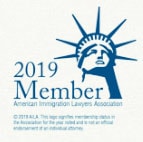What Does This Mean for You?
For non-immigrant travelers like you, this move is intended to make the process more user-friendly, not to mention more efficient for Customs and Border Protection (CBP) officials at the point of entry. Keep in mind that the interim rule will only apply if you arrive in the U.S. by air or sea; if you plan to enter the U.S. through a land border crossing point, you’ll still be required to fill out the paper Form I-94 to seek admission to the country on a temporary basis.
The new rule is expected to go into effect today, April 26, 2013; however, an additional 30-day period may be required to address any public comments or issues that develop before implementation.
How it Will Work
As a foreign national, you will provide your information to a CBP official at the point of entry. Your data will be entered into an electronic database that will store relevant information, including the following:
• Your date of admission into the U.S.
• Your visa type and class of admission
• The duration of your admission and end date for your permitted stay in the U.S.
CBP officials will continue to stamp and annotate foreign nationals’ passports, in order to provide a portable means of identification. You will also be able to access this information online through a new CBP website at www.cbp.gov/I94. Users of the website will be required to enter information directly from their passports to provide added security for this sensitive personal data. Additionally, you can use printouts from the website as an equivalent substitute for the official paper Form I-94.
If you’re an individual subject to secondary inspection, such as a refugee, parolee or person seeking asylum in the U.S., however, you will still be required to use the paper Form I-94.
To learn more about this interim rule or for any other passport, visa or immigration-related issues, it’s best to enlist the services of qualified San Diego nationality attorneys. San Ysidro in San Diego is a Class A Port of Entry into the U.S. By discussing any concerns with San Diego immigration lawyers, you can deal with these issues more effectively and proactively to help ensure that your stay in the U.S. is productive and problem-free.




